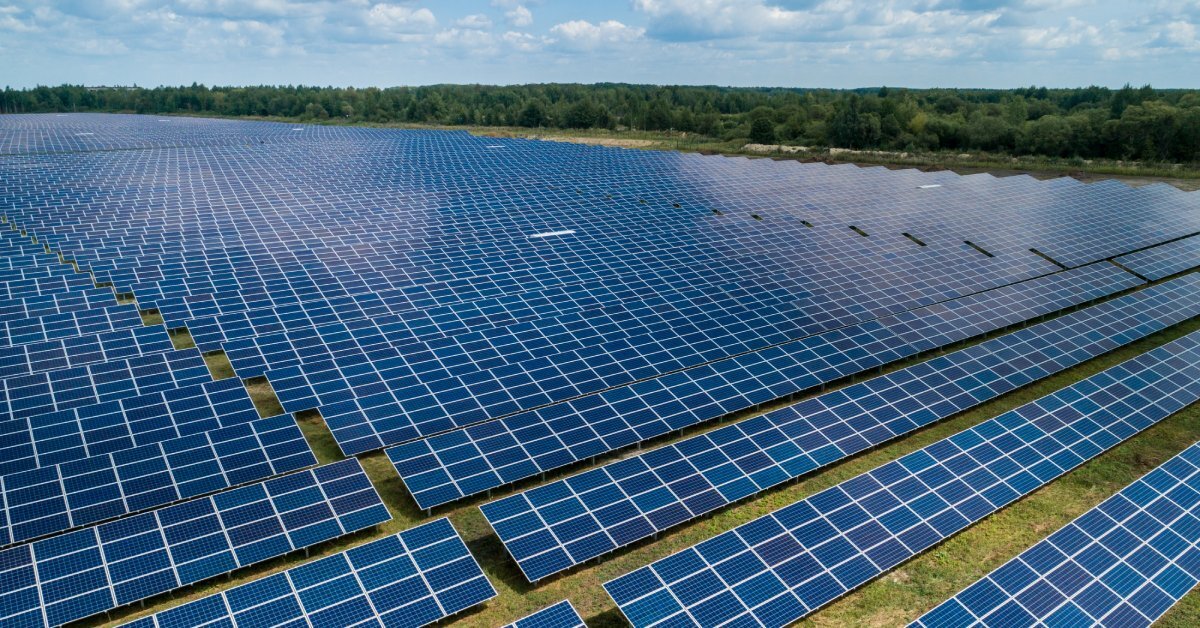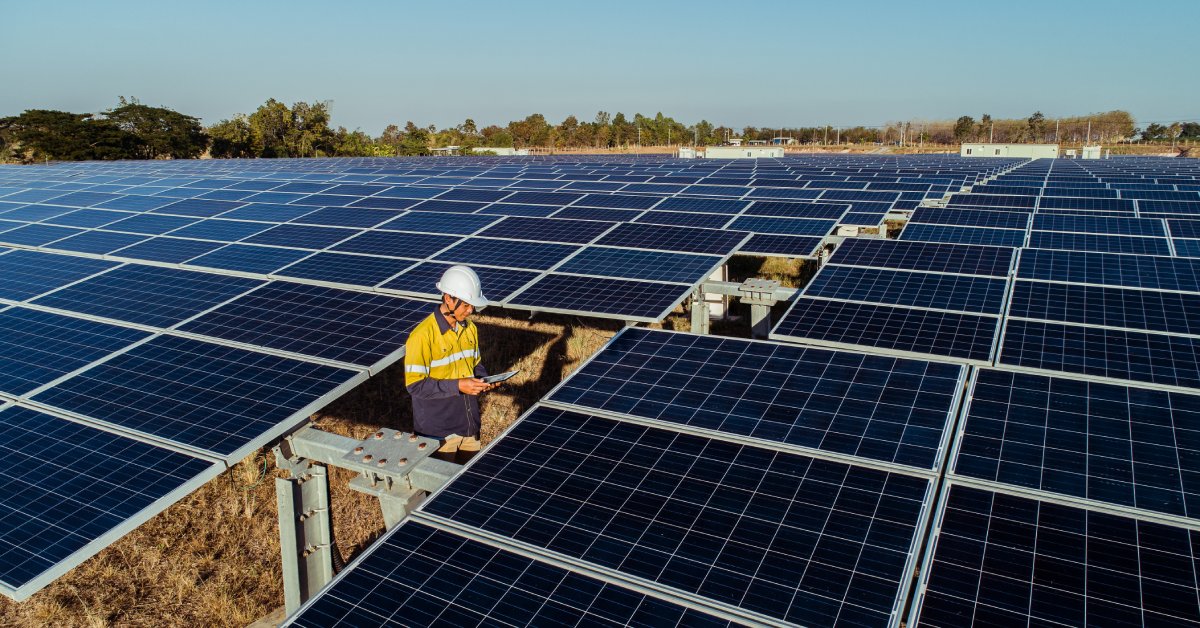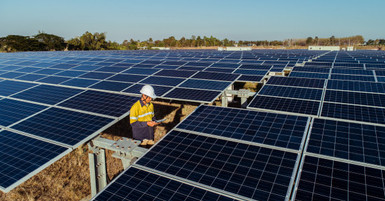Oct 6th 2025
Major Components of a Solar Power System
Building a successful solar farm requires understanding the intricate network of components that transform sunlight into reliable electrical power. For enterprises investing in renewable energy, each of the major components of a solar-powered system plays a critical role in maximizing energy output, ensuring regulatory compliance, and delivering the ROI projections that justify substantial capital investments.
Unlike residential rooftop installations, large-scale solar farms demand robust, industrial-grade components designed to operate efficiently across vast areas and diverse environments. Our comprehensive guide examines the major elements that form a commercial solar power system, and helps you make informed decisions that align with your sustainability goals and financial objectives.
Solar Panels: The Foundation of Energy Generation
Solar photovoltaic (PV) panels serve as the primary energy conversion component in any solar power system. For large-scale installations, selecting the right panel technology directly impacts long-term energy output and project profitability.
Different Types of Panels
Monocrystalline panels offer superior efficiency rates of 20-22%, making them ideal for utility-scale projects where maximizing power generation per square foot is essential. While the initial investment is higher, the increased energy output typically delivers better ROI within the critical five-year timeframe that most investors target.
Polycrystalline panels present a cost-effective solution for projects with ample available land. The lower per-watt cost can significantly reduce upfront capital requirements, though total energy output will be proportionally lower.
Bifacial Panel Advantages
Advanced bifacial solar panels capture sunlight from both sides, increasing energy generation by 10-20% compared to traditional monofacial panels. This technology proves particularly valuable in large-scale installations where ground reflection can be optimized through strategic site preparation and panel mounting configurations.
Inverters: Converting DC to Usable AC Power
Solar panels generate direct current (DC) electricity, but the electrical grid operates on alternating current (AC). Inverters bridge this gap while providing critical system monitoring and safety functions.

String Inverters
String inverters connect multiple panels in series, offering a balanced approach between cost-effectiveness and performance optimization. Modern string inverters include advanced monitoring capabilities that track individual string performance, enabling rapid identification of maintenance needs or performance anomalies.
Power Optimizers and Microinverters
While less common in large-scale installations due to cost considerations, power optimizers can maximize energy harvest in installations with varying panel orientations or partial shading conditions. Each optimizer enables panel-level monitoring, providing granular performance data essential for maintaining optimal system efficiency.
Central Inverters for Maximum Scale
Utility-scale solar farms often employ central inverters that can handle megawatts of power conversion. These industrial-grade units offer the lowest per-watt conversion cost and integrate seamlessly with utility-grade electrical infrastructure.
Mounting Systems: Structural Foundation and Optimization
The mounting system provides structural support while optimizing panel positioning for maximum solar exposure. For large-scale installations, mounting systems have a significant impact on both installation costs and long-term energy output.
Fixed-Tilt Mounting Systems
Fixed-tilt systems offer the most cost-effective mounting solution, with minimal moving parts that reduce maintenance requirements. Proper tilt angle optimization based on geographic location can maximize annual energy production while minimizing structural complexity.
Single-Axis Tracking Systems
Single-axis tracking systems rotate panels to follow the sun's east-to-west movement throughout the day, increasing energy output compared to fixed systems. While requiring higher upfront investment, the increased energy generation often justifies the additional cost for utility-scale projects.
Dual-Axis Tracking for Maximum Efficiency
Dual-axis tracking systems adjust both horizontal and vertical panel positioning to maintain optimal sun alignment throughout the year. This technology delivers the highest energy output but requires significant additional investments in mechanical components and maintenance protocols.
Electrical Infrastructure
Large-scale solar installations require sophisticated electrical infrastructure to safely and efficiently integrate power into the electrical grid. Along with this system, businesses use solar labels to prioritize safety and inform people on-site about the potential dangers within the electrical components.
DC Combiner Boxes
DC combiner boxes consolidate multiple panel strings into larger electrical circuits, incorporating essential safety features like fuses and disconnect switches. These components provide centralized monitoring points and enable safe maintenance procedures on individual system sections.
AC Disconnect Switches
AC disconnect switches provide critical safety isolation between the solar array and the electrical grid. Regulatory compliance requires these switches to be readily accessible to utility personnel and clearly marked for emergency shutdown procedures.

Transformers for Grid Integration
Step-up transformers increase voltage levels from the inverter output to match utility grid requirements. Proper transformer sizing ensures efficient power delivery while meeting electrical codes and utility interconnection standards.
Monitoring and Control Systems
Advanced monitoring systems provide real-time visibility into solar farm performance, enabling proactive maintenance and optimization strategies that maximize ROI.
Performance Monitoring Software
Sophisticated software platforms track energy production, weather conditions, and system performance metrics in real time. These systems generate detailed reports that demonstrate regulatory compliance and provide investors with clear performance data, ensuring transparency and accountability.
Weather Monitoring Integration
Weather stations integrated with monitoring systems provide valuable data for performance analysis and predictive maintenance scheduling. Understanding the correlation between weather patterns and energy output helps optimize system operations and identify maintenance needs.
Remote Monitoring Capabilities
Cloud-based monitoring systems enable remote system oversight, reducing operational costs while maintaining optimal performance. Automated alert systems notify operators of performance anomalies or maintenance requirements, minimizing downtime and maximizing energy output.
Safety and Protection Equipment
Large-scale solar installations incorporate multiple layers of safety and protection equipment to ensure safe operation and regulatory compliance. Ground fault detection is one of the most common protection systems used in solar projects.
These detection systems monitor electrical circuits for dangerous conditions that can create safety hazards or fire risks. These systems automatically disconnect affected circuits while maintaining the operation of unaffected system areas.
Arc fault circuit interrupters detect dangerous electrical arcing conditions and immediately shut down affected circuits. This technology significantly reduces fire risks and meets evolving electrical safety code requirements.
Comprehensive lightning protection systems protect expensive solar equipment from electrical surges during thunderstorms. Proper grounding and surge protection devices safeguard system investments while ensuring personnel safety.
Understanding Solar Components for Maximum ROI
A successful solar project requires carefully integrating all system components to achieve optimal performance and regulatory compliance. Component compatibility, sizing calculations, and installation quality all impact long-term system reliability and energy output.
Keeping your components easily identifiable can help enforce safety standards and prevent accidents from occurring. With Get Solar Labels, you can find the right labels and placards for your current system. Our labels meet NEC standards and can be ordered quickly in bulk to reduce additional costs. Browse our catalog to learn more about our solar label options and how to keep your solar system safe.

